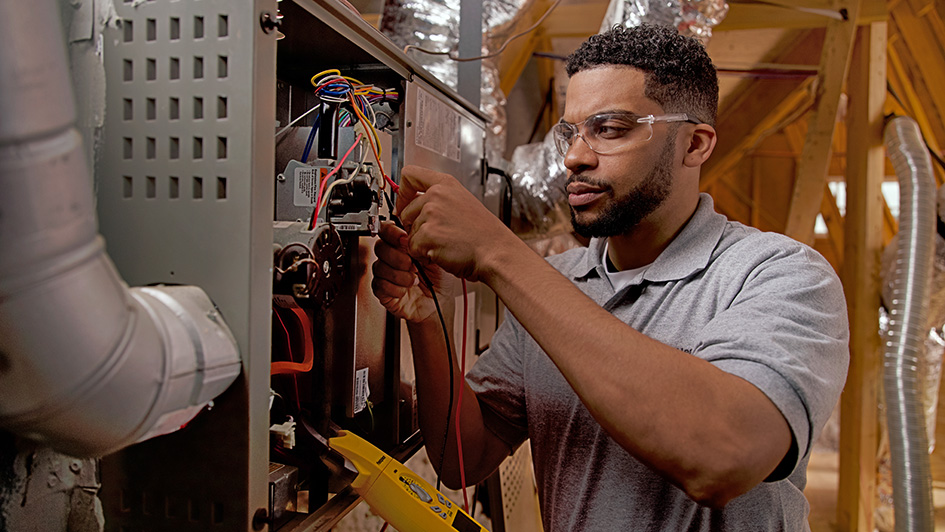
A furnace is usually a background player at home, helping keep you warm during the cold winter months. It often isn't noticed until something goes wrong.
One cause could be that your furnace has a cracked heat exchanger. It can be a safety risk, so it’s important to familiarize yourself with the evidence of a cracked heat exchanger and what you can do if you are worried that might be the problem.
What Is a Heat Exchanger in a Furnace?
A heat exchanger helps transition heat from the combustion chamber inside your furnace to the air that moves inside the air ducts. It usually accomplishes this using coils or tubes that heat up the air while serving as a barrier to keep the gasses created in the combustion chamber, called flue gasses, from leaking out into your home.
Is a Cracked Heat Exchanger Dangerous?
Because of its central role, it isn't surprising that a damaged heat exchanger can be hazardous. A crack in the heat exchanger can permit dangerous gasses – such as carbon monoxide, which can be lethal – to flow across your home.
For that reason, never run your furnace if you suspect you're dealing with a cracked heat exchanger, as doing so could make the entire family ill. Call an HVAC professional immediately if you think your heater has a cracked heat exchanger that needs to be repaired.
Four Signs of a Cracked Heat Exchanger:
- Furnace turns off: A crack in your heat exchanger could cause your furnace to turn off.
- Unusual Smells: If the air escaping your furnace has a powerful chemical scent, it may be a sign gas is leaking through cracks in your heat exchanger. These gasses, which may smell like formaldehyde, are a significant warning sign.
- Carbon monoxide alarm goes off or you notice poisoning symptoms: If a cracked heat exchanger is relieving carbon monoxide into your home, your carbon monoxide alarm may go off or household members could struggle with signs of carbon monoxide poisoning. Complications include headaches, dizziness, weakness, nausea, vomiting or feeling sleepy. If the alarm goes off or you feel unusually tired, get out of the home as soon as you can and then call for help.
- Soot: If you see black sooty buildup around the exterior of your furnace, it’s more evidence something could be seriously wrong.
What You Can Do if the Furnace Heat Exchanger is Cracked
If you suspect your furnace has a cracked heat exchanger, contact a pro experienced in furnace installation Ames right away so they can examine your system and, if necessary, perform a furnace heat exchanger replacement. Costs should differ depending on the situation, but estimates often hover around $1,000 to $3,000.
Fortunately, the good news is that heat exchangers are regularly included in the warranty. It's a good idea to check the warranty paperwork on your furnace, since while the warranty won't always cover the entire cost of repairs, it can significantly lower your bill.
How to Avoid a Cracked Heat Exchanger in Your Home
One of the best ways to avoid problems in your furnace overall is through routine furnace maintenance. Furnaces offer the most benefits when they run efficiently. Hiring a trained professional to examine your furnace for worn-out parts, clogged filters and other likely problems can keep you from getting a big bill later on.
It’s also helpful to review your furnace filters every few months – it’s ideal some filters be swapped out every 90 days or sooner if they are dirty or grimy. While the filters aren't a part of the heat exchanger itself, the strain of pulling air through a clogged filter makes the entire furnace work harder to accomplish its job. And the harder your furnace works, the more deterioration parts like the heat exchanger will endure.
